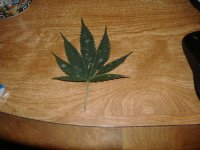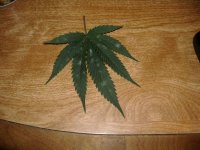Sulfur vapes are the easiets to use on large crops if your small time try www.greencure.net
I have tried milk/water, h202 and water, dutch master & penetrator, almost everything.... the pm always returns in about 4-5 days......Greencure keeps it at bay for about 10 days twice as long.
Pm is like herpes for weed....once you get it... you'll never be rid of it but you can controll it.

............................................heres how to make a homemade sulfur vape use a 60 watt bulb no larger or it will get to hot

I have tried milk/water, h202 and water, dutch master & penetrator, almost everything.... the pm always returns in about 4-5 days......Greencure keeps it at bay for about 10 days twice as long.
Pm is like herpes for weed....once you get it... you'll never be rid of it but you can controll it.

............................................heres how to make a homemade sulfur vape use a 60 watt bulb no larger or it will get to hot


 Had mold like clockwork every 2 weeks and used everything for
Had mold like clockwork every 2 weeks and used everything for




